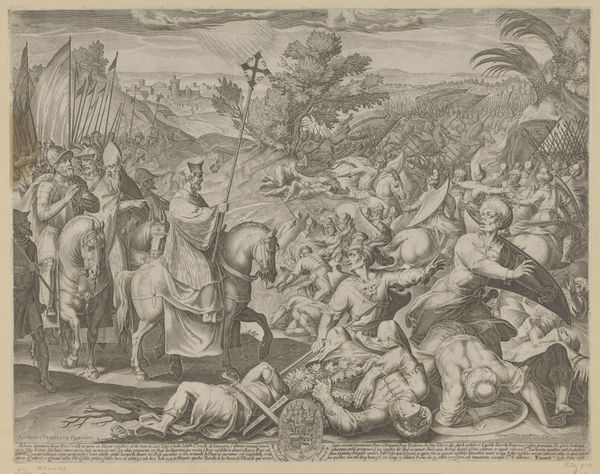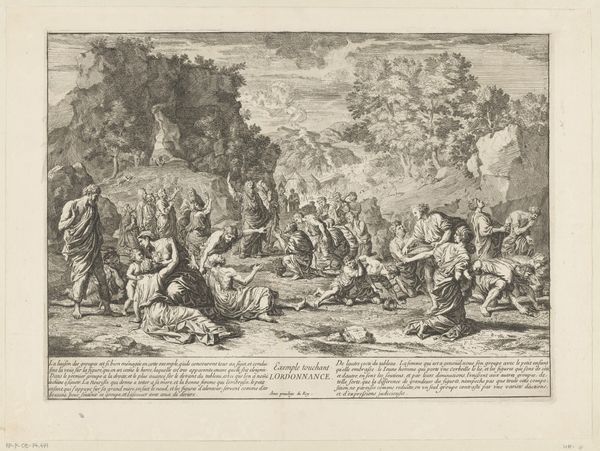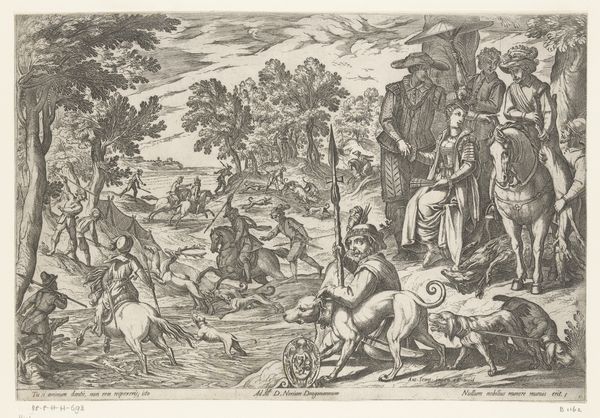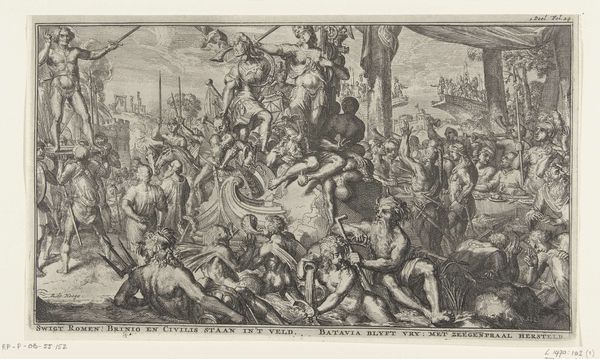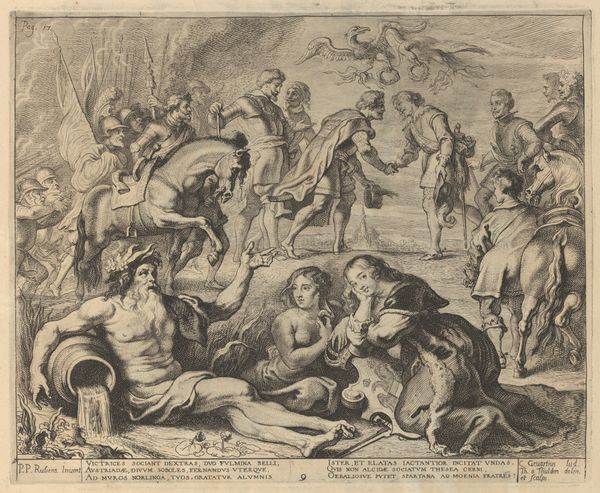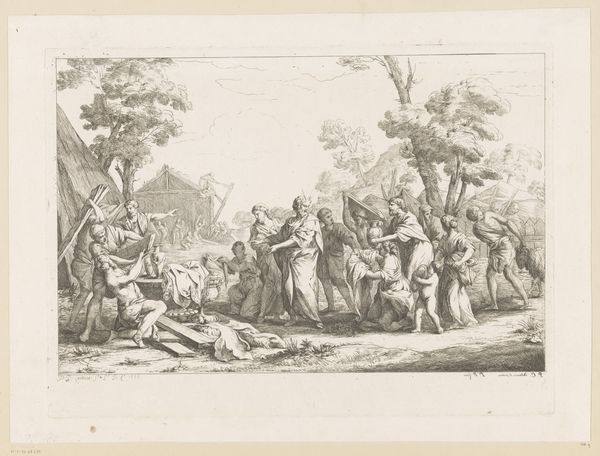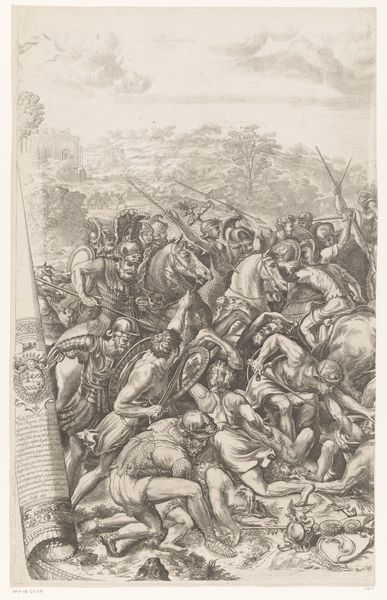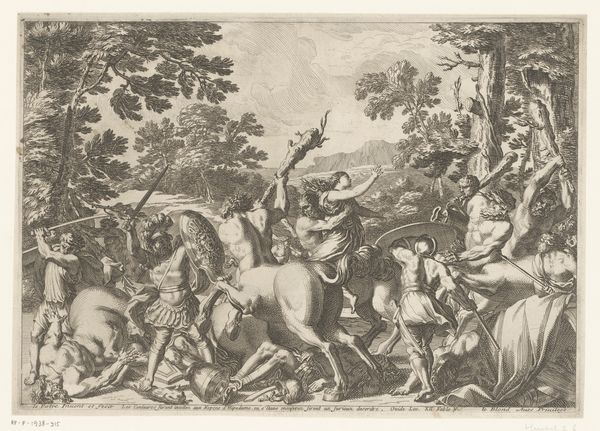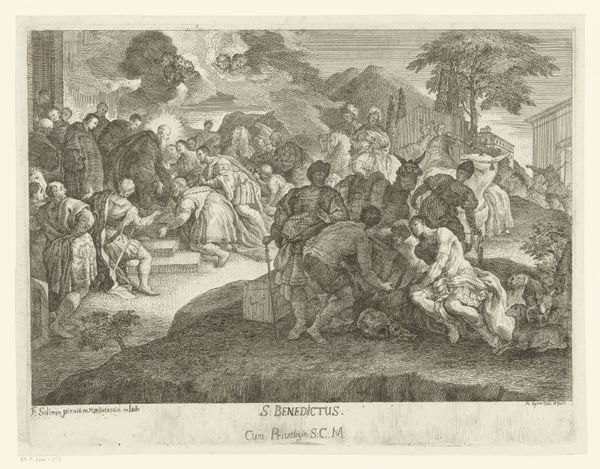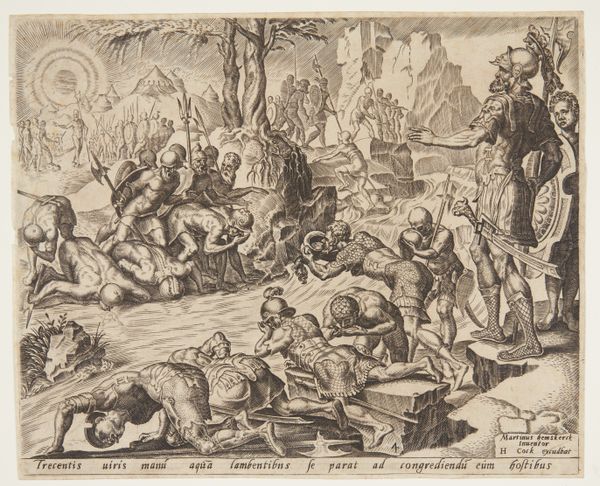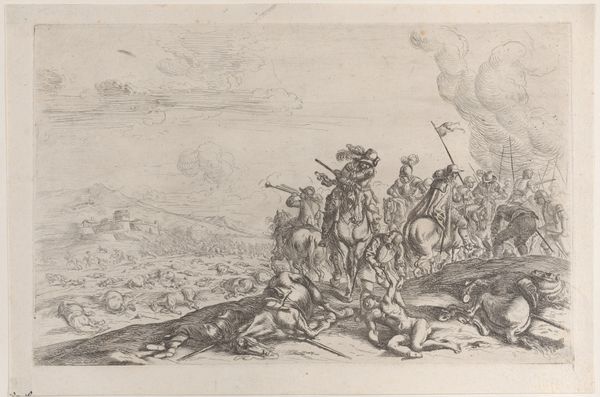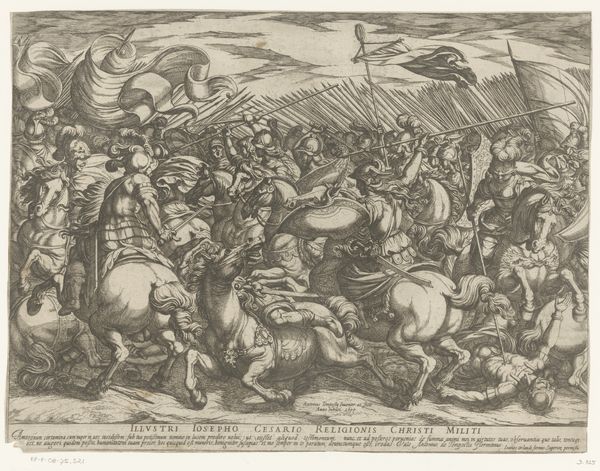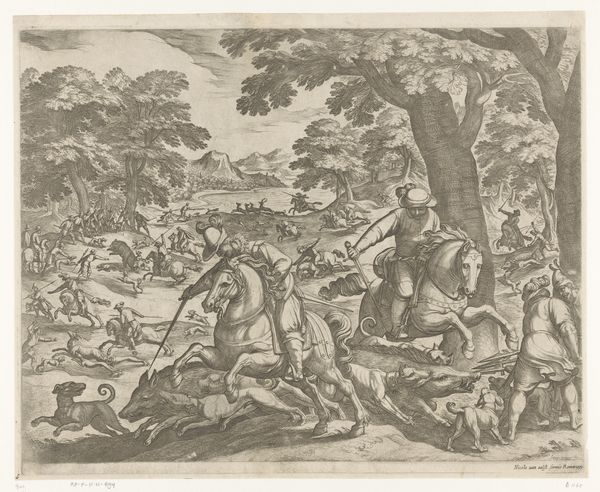
print, engraving
#
baroque
# print
#
landscape
#
figuration
#
history-painting
#
engraving
Dimensions: height 405 mm, width 520 mm
Copyright: Rijks Museum: Open Domain
Editor: So, this print, "Overwinning van Wladislaus Wasa," dating from 1621 to 1660, attributed to Francesco Villamena, is quite a dynamic scene, an obvious landscape battle. It has the chaotic energy of the baroque, but how should we really *read* it? Curator: Given that it’s an engraving, I’d focus less on “reading” and more on considering the labor that went into its production and distribution. Think about the engraver as a skilled worker. How might the act of replicating an image through engraving influence its reception, particularly regarding historical events? Editor: Influence? In what way? Curator: Consider the materiality of printmaking. Engravings were relatively reproducible, disseminating images and narratives widely. Doesn't that mass reproduction have social and political ramifications for how victory or defeat were understood then and later? Editor: That's interesting, the social and political effects. How might that specifically play out here? The choice of paper, the ink... were these strategic? Curator: Definitely. These weren't individual artworks like paintings; these prints existed to circulate. The scale of production and audience interaction impacts the art itself. How many hands touched this work from its creation to its eventual arrival here? Who profited? Whose story does this engraving perpetuate? Editor: So, even the size and number of prints are vital to how the art affects viewers, far beyond subject matter? It’s about how accessible the victory became. Curator: Exactly! We're not just interpreting symbolism; we’re dissecting the material conditions of image-making, shedding light on the production, consumption, and social life surrounding the work. Editor: Wow, that's given me a whole new perspective to consider. Thank you for illuminating that! Curator: Of course! It's about viewing these works as cultural commodities, and how the mode of production informs their very meaning.
Comments
No comments
Be the first to comment and join the conversation on the ultimate creative platform.
